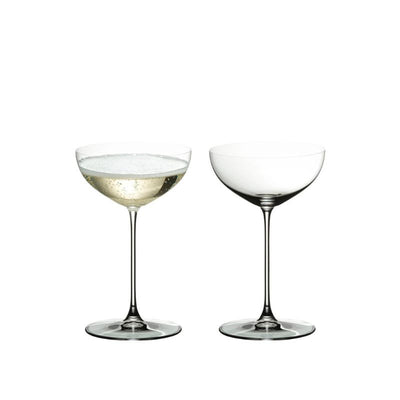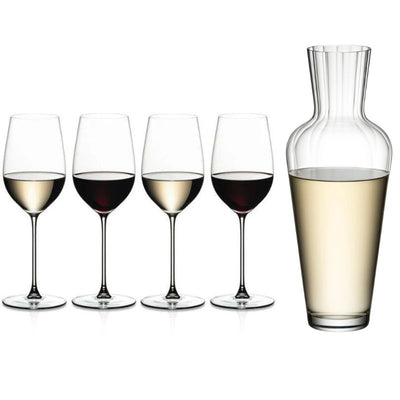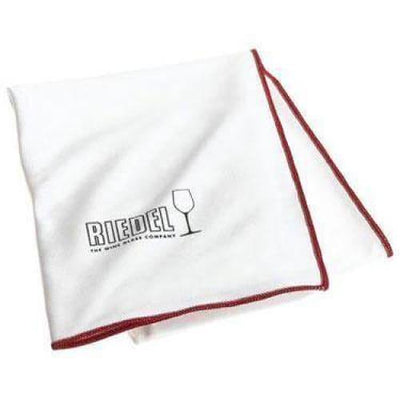Wine Etiquette: Do's and Don’ts for Every Occasion

Wine has been a symbol of refinement and culture for centuries, a drink that embodies celebration, companionship, and tradition.
Whether you’re hosting a dinner party, attending a formal event, or simply enjoying a quiet evening with a glass of your favourite vintage, understanding the nuances of wine etiquette is key to making the most of your experience. This guide will walk you through the dos and don’ts of wine, covering everything from serving and tasting to gifting and storing.
1. Serving Wine: The Art of Presentation
The way wine is served can greatly impact the overall experience, both for you and your guests. Here’s how to ensure that your wine service is impeccable.
Do: Serve at the Right Temperature
- White Wines: White wines are best served chilled, generally between 7 - 10°C. This temperature range preserves their crispness and enhances the refreshing qualities that make them so popular, especially in warm weather. For a quick chill, place the bottle in an ice bucket filled with ice and water for about 20 minutes.
- Red Wines: Contrary to popular belief, red wines are not meant to be served at (modern) room temperature. The ideal temperature is slightly cooler, between 13 - 18°C. Serving red wine at this temperature allows its flavours and aromas to fully express themselves without being muted by excessive warmth.
- Sparkling Wines: Serve well-chilled, at about 4 - 7°C, to keep the bubbles lively and refreshing.
- Red Wine: Use larger, rounder glasses that allow the wine to breathe, providing more surface area for oxygen to interact with the wine. This interaction softens the tannins and enhances the complexity of the aromas.
- White Wine: Use smaller, narrower glasses to maintain the wine’s cooler temperature and concentrate its delicate aromas. A narrower bowl also directs the wine to the front of the palate, where its acidity is most refreshing.
- Sparkling Wine: Serve in “egg-shaped” glasses, which help preserve the wine’s bubbles by reducing the surface area exposed to the air, but with enough surface area to let it breathe.
 |
Don’t: Hold the Glass by the Bowl
|
Do: Decant When Appropriate
- Decanting isn’t just for show; it serves a purpose. Decant older red wines to separate the wine from any sediment that may have formed over time. Decanting younger wines, especially robust reds like Cabernet Sauvignon or Syrah, can help them open up and develop more complex flavours by exposing them to air.
Don’t: Ignore the Bottle Label
- The label contains valuable information, including the wine’s origin, grape variety, and vintage. Use this information to introduce the wine to your guests, adding to the overall appreciation of the experience. If you’re unsure about certain terms, a quick online search can provide insights that will enhance your understanding and enjoyment (and make you look like a clever-clogs).
2. Tasting Wine: Appreciating the Nuances
Wine tasting is both an art and a science, a sensory experience that involves sight, smell, and taste. The proper tasting technique can elevate your appreciation of wine’s complexity.
Do: Swirl and Smell
- Swirling the wine in your glass aerates it, releasing aromatic compounds that contribute to the wine’s bouquet. Take a moment to inhale deeply after swirling. The nose can detect a wide range of aromas, from fruity and floral to earthy and spicy, which gives you the first impression of the wine’s character.
Don’t: Rush the Tasting Process
- Wine tasting should be an unhurried experience. Take small sips and let the wine sit on your palate for a few seconds. Notice the initial flavours, the texture, and how the wine evolves as it interacts with your taste buds. Pay attention to the finish—the lingering taste after swallowing, which can tell you a lot about the wine’s quality.
Do: Cleanse Your Palate
- When tasting multiple wines, it’s important to cleanse your palate between tastings to ensure each wine is tasted on its own merits. Plain water, unsalted crackers, or bread are ideal palate cleansers. Avoid strongly flavoured foods that can linger on the palate and interfere with the wine’s taste.
Don’t: Mix Wines in the Same Glass
- Always use a clean glass for each new wine to avoid blending flavours, which can create a muddled tasting experience. If you must reuse a glass, rinse it with a small amount of the next wine before pouring a full serving. This is known as a “wine rinse” and is a practical solution when glassware is limited.
Do: Take Notes
- If you’re at a wine tasting event or trying several wines, jot down your impressions. Note the wine’s appearance, aroma, flavour, and any particular characteristics that stand out. This helps you remember what you liked and didn’t like, and can guide your future purchases.
Don’t: Overwhelm Your Palate
- Be mindful of how many wines you taste in one sitting. Tasting too many wines in a short period can fatigue your palate, making it difficult to appreciate subtle differences. Stick to a manageable number and take breaks if needed to keep your senses sharp.

3. Gifting Wine: The Thoughtful Gesture
Giving wine as a gift is a timeless tradition, one that speaks of generosity, taste, and appreciation. However, there are certain guidelines to ensure your gift is both appropriate and well-received.
Do: Consider the Recipient’s Tastes
- If you’re familiar with the recipient’s wine preferences, choose a bottle that suits their tastes. For example, if they enjoy full-bodied reds, a bottle of Cabernet Sauvignon or Malbec would be a good choice. If you’re unsure of their preferences, opt for versatile wines like a well-balanced Pinot Noir or a crisp Sauvignon Blanc that most wine lovers will enjoy.
Don’t: Show Up Without a Gift
- When invited to a dinner or gathering, bringing a bottle of wine is a thoughtful gesture that shows appreciation for the host’s hospitality. Even if the host has already selected wines for the evening, your gift can be enjoyed later or added to their collection. It’s a simple way to contribute to the occasion and share in the celebration.
Do: Present the Wine Thoughtfully
- The presentation of your wine gift is as important as the wine itself. Choose a stylish wine bag or box to present the bottle. Including a handwritten note with a personal message adds a special touch, making the gift more memorable. If the wine has a particular significance, such as being from a region the recipient loves or from a year with personal meaning, mention this in the note.
Don’t: Expect Your Gift to Be Opened Immediately
- It’s common for the host to have pre-selected wines for the evening, so don’t be offended if your gift isn’t opened on the spot. The host may choose to save it for another occasion, which is perfectly acceptable. If you’d like the wine to be enjoyed during the event, consider mentioning that when you present it, but be gracious if the host decides otherwise.
Do: Consider the Occasion
- The occasion can influence the type of wine you choose as a gift. For example, a bottle of Champagne or sparkling wine is ideal for celebrations like birthdays, anniversaries, or holidays. For a more intimate dinner party, a thoughtfully selected red or white wine that pairs well with the meal is appropriate. If the event is casual, a versatile rosé or a crisp white can be a refreshing choice.
Don’t: Gift Inexpensive or Gimmicky Wines
- While you don’t need to break the bank, avoid gifting very inexpensive wines or bottles with gimmicky labels, which can come across as thoughtless. Instead, choose a wine that represents good value - there are many excellent wines available at reasonable prices. If you’re unsure, consult a wine merchant or do a little research online to find a quality option within your budget.
4. Storing Wine: Preserving Quality
Proper wine storage is crucial for maintaining the wine’s integrity over time. Whether you’re storing wine for a short period or aging it for years, following these guidelines will help ensure your wine remains in peak condition.
Do: Store Wine Properly
- Store wine bottles horizontally, especially those with cork closures. This keeps the cork moist, preventing it from drying out and allowing air to seep into the bottle, which could oxidize the wine. Keep the storage area cool, ideally between 10-15°C, and dark, as light can prematurely age wine. A wine rack in a cellar or a designated wine cooler is ideal for long-term storage.
Don’t: Store Wine in the Kitchen
- The kitchen might seem like a convenient place to store wine, but it’s often too warm and subject to temperature fluctuations. These changes can spoil the wine by accelerating its aging process. The vibrations from appliances can also disturb the wine, affecting its quality. Avoid storing wine on top of the fridge or near the stove, where heat and vibrations are common.
Do: Invest in a Wine Cooler
- For those who enjoy collecting or aging wine, a wine cooler or a dedicated wine fridge is a worthwhile investment. These appliances provide a controlled environment with stable temperature and humidity levels, protecting your wine from the elements that can lead to spoilage. Wine coolers are available in various sizes, from small units that hold a dozen bottles to large ones that can store hundreds.
Don’t: Keep Wine for Too Long
- Not all wines are meant to be aged. While some fine wines improve with time, most are best enjoyed within a few years of purchase. Aging wine for too long can result in the loss of its flavour, balance, and overall quality. If you’re unsure whether a wine should be aged, consult the producer’s guidelines or seek advice from a knowledgeable wine merchant.
Do: Monitor the Humidity
- Humidity plays a role in wine storage, particularly for wines with cork closures. The ideal humidity level is between 60-70%. Too low, and the cork can dry out; too high, and mould can develop on the cork or label. A wine fridge usually maintains the right humidity level, but if you’re storing wine in a cellar or cupboard, consider using a hygrometer to monitor the conditions.
Don’t: Store Wine in Clear Glass
- Clear glass bottles are more susceptible to light exposure, which can cause wine to develop unpleasant flavours. If you must store a wine in a clear bottle, ensure it’s kept in a dark place, away from any light sources. Many premium wines are bottled in dark glass for this reason, but clear bottles of rosé or white wine should be stored with extra care.
5. Dining with Wine: Complementing the Meal
Pairing wine with food is an art form that enhances both the dining experience and the enjoyment of the wine. The right combination can elevate a meal, while a poor pairing can detract from it. Here’s how to get it right.
Do: Pair Wine with Food
- Red Wine: Typically pairs well with red meats, rich sauces, and aged cheeses. The tannins in red wine complement the proteins in meat, creating a harmonious balance of flavours. For example, a Cabernet Sauvignon pairs beautifully with a grilled steak, while a Pinot Noir complements a roasted duck.
- White Wine: Best with lighter fare such as seafood, poultry, and dishes with cream or butter sauces. The acidity in white wine cuts through the richness of these foods, refreshing the palate. A Sauvignon Blanc pairs well with a goats cheese salad, while a Chardonnay is a classic match for roasted chicken.
- Sparkling Wine: Versatile and festive, sparkling wines pair well with a wide range of foods, from salty appetisers to light desserts. Their effervescence and acidity make them particularly good with fried foods, as they cleanse the palate between bites.
- Rosé Wine: Pairs with a variety of dishes, from grilled vegetables to spicy cuisine. Its balance of red and white wine characteristics makes it a flexible option for many meals, especially during the warmer months.

|
Don’t: Overwhelm the Palate Avoid pairing heavy wines with delicate dishes.
The intensity of a full-bodied wine can overwhelm subtle flavours, making it difficult to appreciate the dish. For example, a powerful Syrah could overshadow a light fish dish, so it’s better paired with a robust meat one instead.
When in doubt, follow the basic rule: lighter wines with lighter foods, and heavier wines with heavier foods. However, don’t be afraid to experiment and trust your palate.
|
Don’t: Forget Dessert Wines
- Sweet wines like Port, Sauternes, or Moscato are ideal for pairing with desserts, but they can also be enjoyed on their own as a dessert alternative. When pairing with food, ensure the wine is sweeter than the dessert to avoid making the wine taste bitter. A rich chocolate dessert pairs beautifully with a glass of Port, while a Sauternes complements a fruit tart or blue cheese.
Do: Match Regional Wines with Regional Dishes
- Regional pairings often work well because the wines and foods have evolved together over centuries. For example, Italian Chianti pairs wonderfully with tomato-based pasta dishes, and French Chablis is a classic match for oysters. If you’re enjoying a dish from a particular region, consider pairing it with a wine from the same area for a harmonious experience.
Don’t: Serve Red Wine with Spicy Food
- Spicy foods can clash with red wines, particularly those with high tannins, making the wine taste more bitter and the food more fiery. Instead, pair spicy dishes with off-dry white wines, such as Riesling or Gewürztraminer, which have enough sweetness to balance the heat.
Do: Serve Wine in Courses
- If you’re serving multiple courses, consider pairing a different wine with each course to enhance the dining experience. Start with lighter wines for starters and salads, move to fuller-bodied wines for the main course, and finish with a dessert wine. This progression allows each wine to shine and complements the flavours of each dish.
Don’t: Ignore the Wine Temperature During the Meal
- As the meal progresses, the wine in your glass may warm up or cool down. To maintain the optimal drinking experience, keep white wines in a cooler or ice bucket, and red wines at slightly below room temperature. If the red wine becomes too warm, a quick chill in the fridge for 10-15 minutes can bring it back.
Conclusion
Wine etiquette is about more than just following rules; it’s about enhancing your enjoyment of wine and the experiences it accompanies. Whether you’re hosting a dinner, attending an event, or simply sharing a bottle with friends, understanding these dos and don’ts will help you navigate any wine-related occasion with confidence and grace.
By serving, tasting, gifting, and storing wine thoughtfully, you’ll not only impress your guests but also deepen your own appreciation and avoid making expensive mistakes.
Cheers to that!























Leave a comment